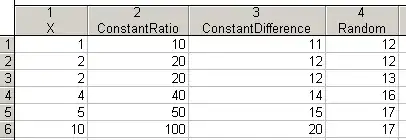Most of you will have been entertained by the recent blog post showing how random things in the world correlate without, of course, necessarily being causally related.
Looking at those graphs, I was wondering in my mind whether, for two vectors X and Y to be correlated, it is the difference or the ratio between their respective elements that needs to be relatively constant between elements. In the graphs, the two variables are always on very different scales, and so it is the difference that is constant rather than the ration.
Did a quick check in Statistica and turns out that either is sufficient:


Or am I making a mistake here?
Looked at the definition of Cov(X,Y) but didn't help me understand better.